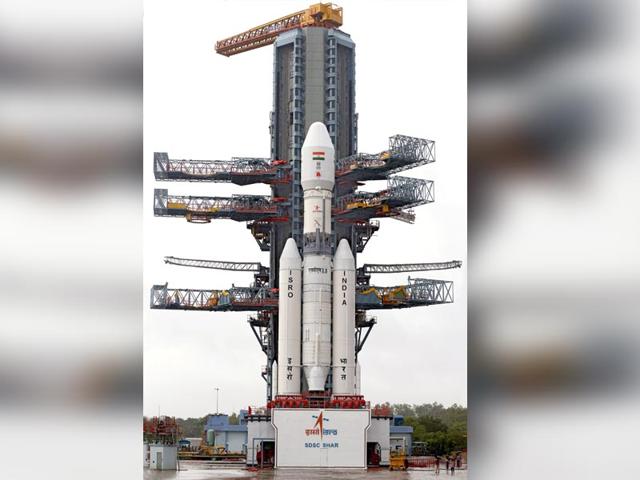India-US space cooperation set to reach new heights
Isro now launching American satellites certainly marks a dramatic upswing in bilateral space cooperation, writes Prakash Chandra.
Indian rockets will soon propel India-US space cooperation to new heights. Antrix Corporation Ltd, the commercial arm of the Indian Space Research Organisation (Isro), recently signed a deal with Google’s Sky Box Imaging to launch nine micro satellites (each weighing around 100 kg) using the Polar Satellite Launch Vehicle (PSLV), over a year.

A couple of these micro-satellites are expected to be launched along with India’s Astrosat from Sriharikota later this year: The first time an Indian booster launches American satellites from an Indian spaceport. Coming close on the heels of Isro and Nasa setting up a joint working group for Mars exploration, this adds a new dimension to their partnership.
India’s Moon and Mars missions brought global acknowledgement of Isro’s ability to develop and deploy cost-effective technologies and it was almost inevitable that the world’s leading spacefaring country would join hands with Isro in exploring the final frontier.
In 2008, the ‘foreign’ payload on board India’s Chandrayaan-1 Moon mission included two American instruments: The Mini Synthetic Aperture Radar and the Moon Mineralogy Mapper (which helped determine the existence of water ice under the lunar surface).
And in 2013, by a coincidence, the US spacecraft Mars Atmosphere and Volatile Evolution mission (MAVEN) entered the Martian orbit just two days before India’s Mars Orbiter Mission (MOM) did. Nasa’s deep space network provided space navigation and tracking support to MOM, and now Isro and Nasa routinely share data and imagery from these spacecraft.
According to the US ambassador to India, Richard Verma, Nasa and Isro are poised for even closer cooperation. Talking to students at IIT Madras recently, he announced that the two countries “are working out a plan for cooperation over deep space exploration…on missions beyond Mars.” Potential areas of cooperation include manned spaceflight: A lean budget (and a leaner political will) may have forced India to shelve its human spaceflight programme, but it is not implausible for Indian astronauts to participate in Nasa missions at some point.
Isro, of course, is an established player in the satellite launch business. Since 1995, the space agency’s workhorse launcher PSLV has launched 77 satellites — 45 of these belonging to 19 countries — and counting, given the long list of launch requests from overseas in Isro’s packed calendar.
As Isro chairman, As Kiran Kumar told mediapersons recently, “The US will be the 20th country to sign up for a commercial launch by India.”
The series of Indian Remote Sensing (IRS) satellites are among the most advanced civilian applications satellites on the planet and even the world’s largest satellite manufacturers in the US plump for IRS imagery from Antrix Corporation.
The US played a key role in the early Sixties in establishing the sounding rocket programme that marked the beginning of India’s space effort. In subsequent years, Nasa helped Isro in satellite broadcasting and remote sensing — till 1974, when India-US bilateral relations became strained in the wake of India’s first nuclear test and, later, the success of its first launch vehicle, the SLV-3, in 1980 (which also demonstrated the country’s technological capability to build ballistic missiles).
Quoting non-proliferation reasons, the US tightened export controls on high-technology items and, in May 1992 (a year after India decided to import cryogenic technology from Russia) slapped sanctions on Isro. Several Indian organisations appeared on Washington’s ‘entity list’ — a prohibitive roster that denied the transfer of advanced US space, nuclear and missile technologies to protect America’s hardware edge.
Cooperation between Isro and Nasa came to a standstill after India’s nuclear tests in 1998, when the Clinton administration enforced a unilateral embargo on Isro.
Washington’s jitters about Isro making the electronic brains of guidance systems for missiles were not exaggerated, as technologies do sometimes cross over from civilian to military applications.
But resorting to such extensive export curbs made no sense, especially when applied to dual-use products, given the fact that they only affected legitimate buyers (terrorists and unfriendly states could always bypass the system and acquire them, anyway).
A better idea would have been to block the sales of purely military technology like, say, stealth equipment that has no legitimate commercial market.
Washington, however, acknowledged this only in 2004 and India-US ties improved as civilian space programmes were made part of the India-US Next Steps in Strategic Partnership (NSSP) agreement.
Since then, both sides have collaborated on climate change research and utilised data from remote sensing satellites for weather forecasting, disaster management support and education. And Isro now launching American satellites certainly marks a dramatic upswing in bilateral space cooperation.
India and the US could use their resources and capabilities to make a positive difference in areas like space situational awareness (SSA) — so crucial for spaceflight safety and for preventing collisions in space (a risk realistically portrayed in the Oscar-winning film Gravity).
Stronger India-US space ties bode well for multilateral cooperation, too, what with over 50 space agencies across the globe eager to participate in space exploration.
Formulating much-needed space laws needs strong leadership and Isro’s impeccable credentials could see India play a major role in the United Nations Committee on the Peaceful Uses of Outer Space (COPUOS).
(Prakash Chandra is a science writer. The views expressed are personal.)



